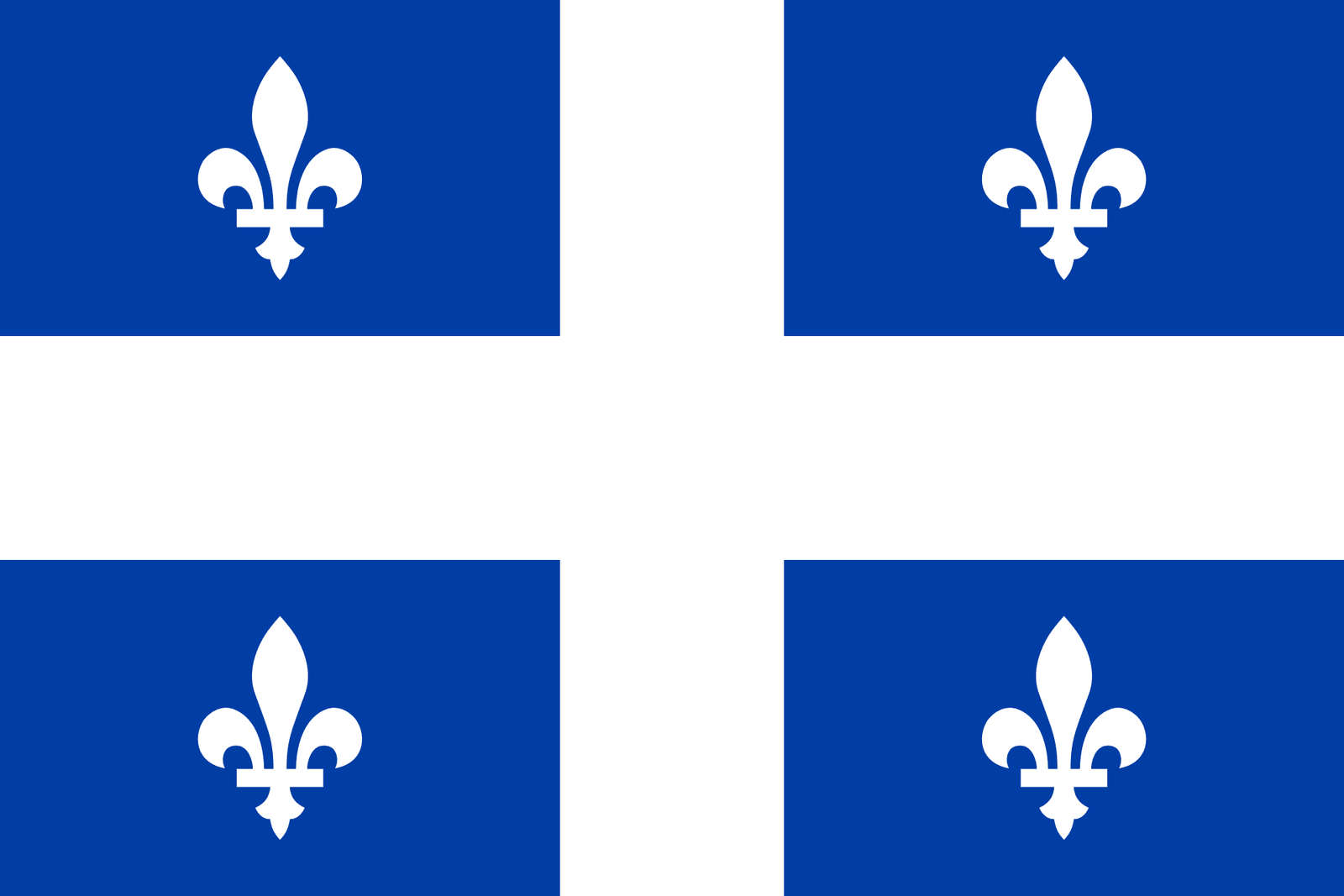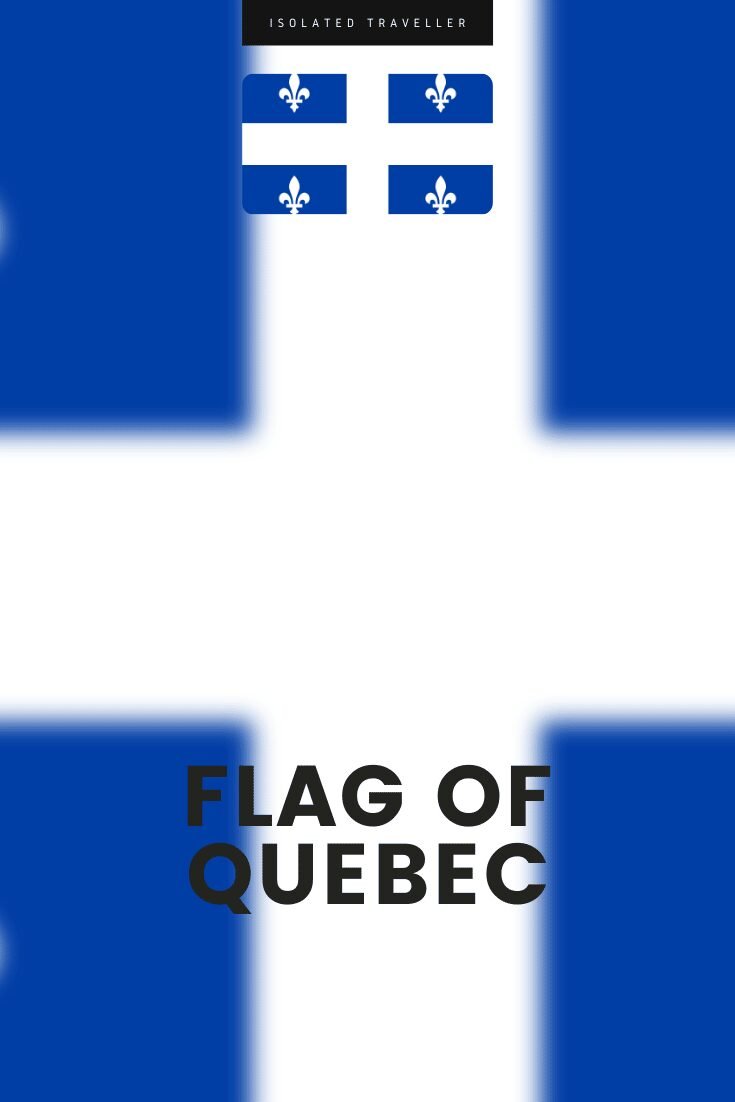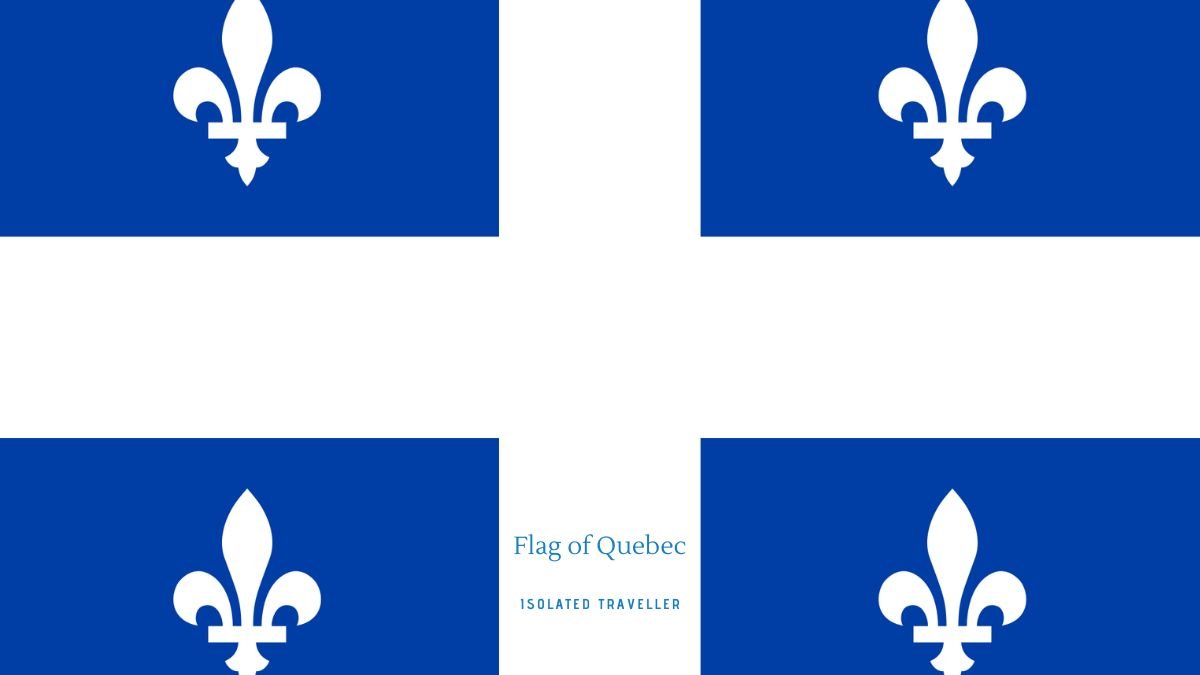Flag of Quebec
The flag of Quebec is recognized all over the world as a symbol of the Québec nation. The flag was inaugurated on January 21, 1948, and stands out for featuring a white cross on a blue background. This crosses the St. George’s Cross, a red flag with a white cross that was carried by English troops in the Crusades. Several interpretations have been advanced over the years, one of the most common is that it represents the Christian faith. However, this interpretation has never been confirmed officially.

History
The first Quebec flag was created in 1814 by Captain François-Gaston de Lévis and General Charles de Salaberry. It was white, with a green cross (a crucifix or cross) in the center of it. In 1848, this flag design was slightly revised so that there were only four maple leaves on each side instead of six. The reason for this is unknown but could have been to avoid confusion between flags flown by foreign armies who used an even number of maple leaves on their own flags.
The first Quebec-owned flag was white with a green crucifix or cross. It was used by the Patriote rebels in 1814 and during the Lower Canada Rebellion of 1837-1838.
The first official flag of Quebec, which is still in use today, was adopted by the Legislative Assembly on June 14th 1964. This flag has three vertical stripes: one white on top, one red in the middle and one blue at the bottom. The French fleur de lys emblem is found in each of these three colours (on either side) as well as on a separate banner across from these stripes. The yellow sun symbolizes hope for people living together peacefully under one common goal; this hope for peace can be seen clearly through its design – two hands holding up each other’s palms to show their unity through peace rather than violence!
The official flag of Québec is based on an ancient model used by many peoples in Central Asia. The vertical white cross on a blue background, known as the “Québécois Cross,” was also used by French Canadians during the 17th and 18th centuries. In 1993, an Act concerning the flag and emblems of Québec declared this design to be Quebec’s official banner.
The flag of Quebec is the symbol of the province and its people. It was adopted in 1948, following a contest launched by the Journal de Montréal newspaper. It features a white cross on a blue background.
The design was created by Jacques Saint-Cyr, who won second prize out of 90 submissions to the competition organized by Le Devoir newspaper in 1945. Its adoption by the National Assembly on 21 January 1948 coincided with celebrations marking 200 years since French explorer Samuel de Champlain founded Quebec City (Ville de Québec). The flag is based on the French tricolour with a white cross across it, but has been modified since then to ensure greater visibility against other flags flown together or at night when illuminated from below like during parades or sporting events.
Design
You’ve probably seen the flag of Quebec a few times, but do you know what it represents? The design of the Quebec flag is a white cross on a blue background. The white cross is a symbol of the Christian faith and has been used as such since at least 1534 when King Henry VIII ordered all English churches to display one. In fact, some historians believe that crosses were first used as symbols by Christians during their persecution by Romans (who were pagans).
The blue background represents the sky above Quebec and has been associated with that region since Jacques Cartier made his famous voyage across Canada’s east coast in 1534.
Conclusion
Quebec has an official flag that represents its people and culture.


